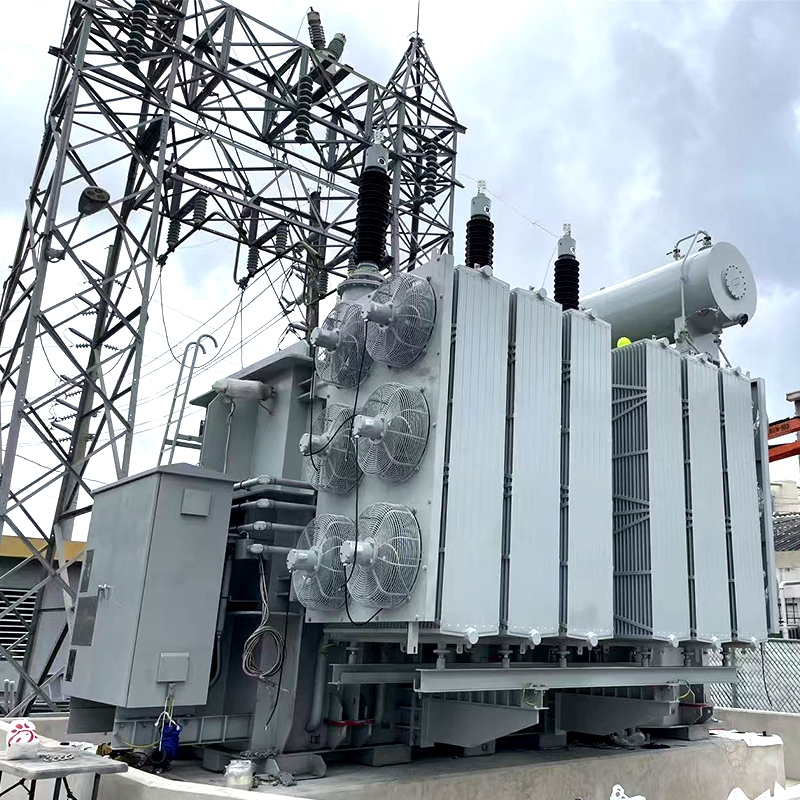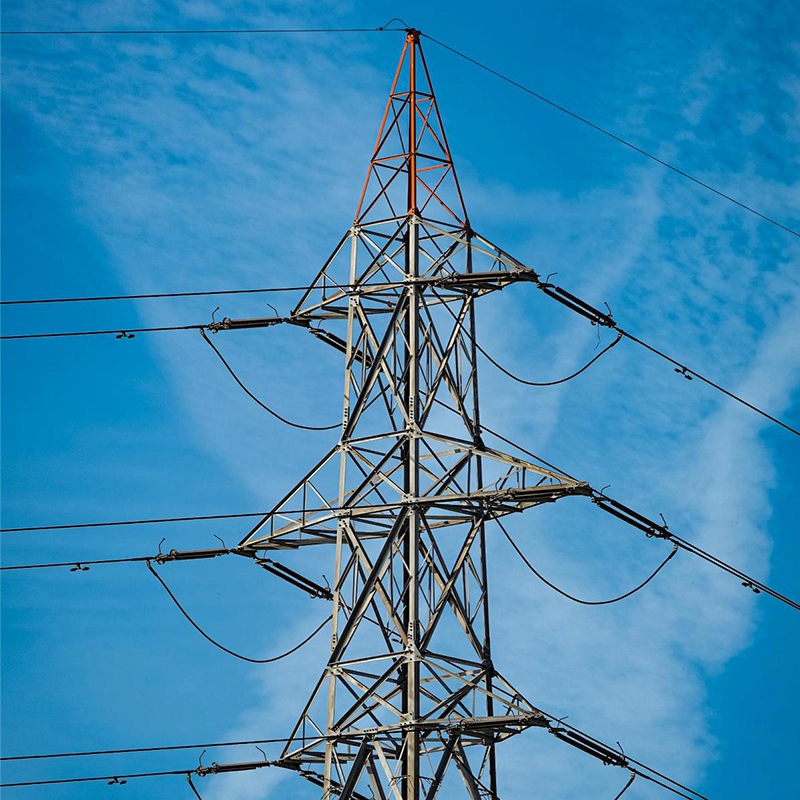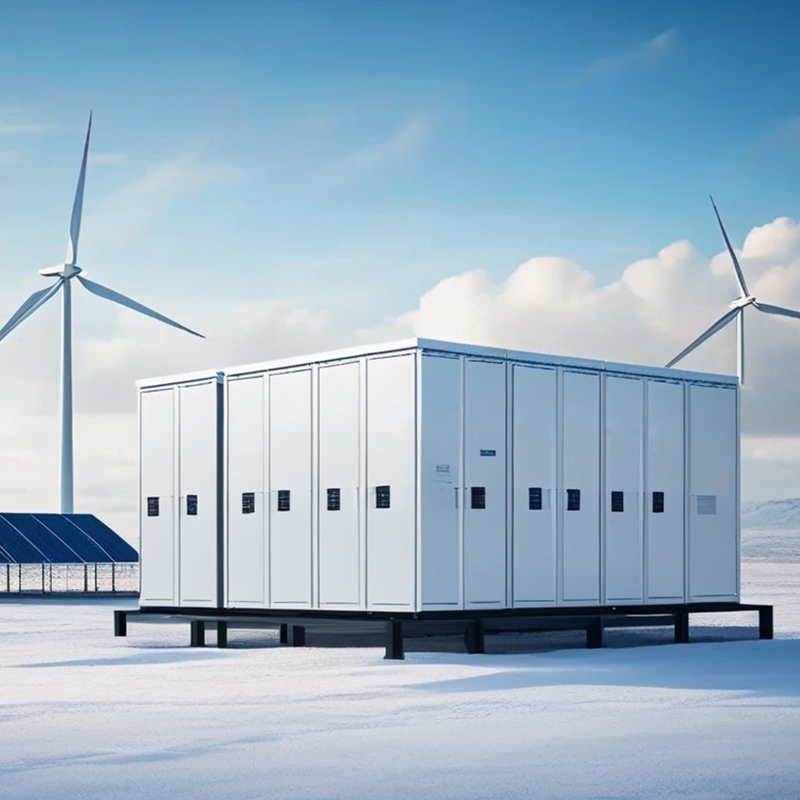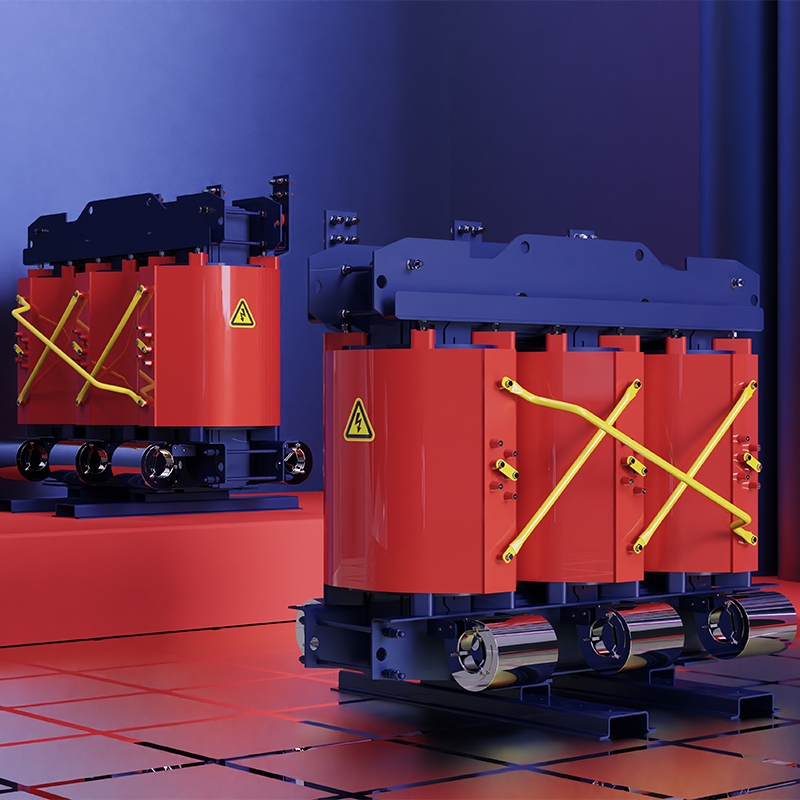Introduction to transformer cooling mode
1, oil immersion self-cooling (ONAN)
The working principle of the oil-immersed self-cooling type is to drive the heat generated by the transformer to the surface of the tank wall and the location of the heat dissipation tube by playing the role of natural convection of the oil, and then dissipate the heat under the action of air convection and air heat conduction, such a cooling system has no special cooling equipment. 31500kVA and below, 35kV and below products;
50000kVA and below, 110kV products.
2, oil-immersed air cooling (ONAF)
The working principle of the oil-immersed air-cooled cooling system is that on the basis of the working principle of the oil-immersed self-cooling type, some fans are installed on the wall of the tank or the heat pipe, so that the transformer can be cooled through the role of the fan blower. After the addition of fans, the capacity of the transformer and the working load can be increased by nearly 35%. When the transformer is in operation, it will produce a certain amount of iron loss, copper loss and other forms of loss, which will exist in the form of heat inside the transformer, thus making the temperature of the core, winding and other components inside the transformer rise. The heat dissipation process of the oil-immersed transformer is: First of all, the heat generated inside the core and winding is transferred to the surface through heat conduction, and then transferred to the oil, and then through the natural convection of the oil, the heat generated in it is constantly driven to the inner wall of the oil tank and radiator tubing, and through the heat conduction, the heat is transferred to the outer surface of the oil tank and radiator. After completion, the heat is transferred to the surrounding air under the action of air convection and thermal radiation.
12500kVA ~ 63000kVA, 35kV ~ 110kV products;
Products below 75000kVA and 110kV; 40000kVA and below, 220kV products.
3, forced oil circulation air cooling (OFAF) 50000 ~ 90000kVA, 220kV products.
4, forced oil circulation water cooling (OFWF)
General hydraulic power plants boost voltage to 220kV and above, 60MVA and above products are used.
Strong oil air cooling and strong oil water cooling work in the same way. If the main transformer uses a forced oil circulation cooling method, then its working principle is to operate the oil in the transformer, use the oil pump to drive it into the cooler and then repeatedly make it into the tank, the oil cooler needs to be made into some special shape that is easier to heat, so that the medium can be cooled by the electric fan. To take away the heat generated by the transformer. Such a heat dissipation method can increase the capacity of the transformer by nearly 30% if the speed of the oil circulation is tripled. The heat dissipation process of the forced oil circulation transformer is: The oil is first sent into the iron core or the oil pipeline between the windings with a submersible oil pump, so that the heat generated by the cold oil with a certain flow rate can be taken away, and the hot oil generated by the transformer upper layer can be extracted with the submersible oil pump, and the oil is again sent to the bottom of the transformer tank after cooling by the cooler. This forces the oil of the transformer to cool the oil cycle.
5, forced guided oil circulation air cooling (ODAF) 75000kVA and above, 110kV products; 120000kVA and above, 220kV products; 330kV class and 500kV class products.
6, forced guided oil circulation water cooling ODWF) 75000kVA and above, 110kV products; 120000kVA and above, 220kV products; 330kV class and 500kV class products.
Traditional Power Transformers are manually controlled fans, and each transformer has 6 groups of air-cooled motors that need to be controlled, and each group of fans rely on thermal relays to achieve, the fan power loop is controlled by contactor, the fan is measured by the oil temperature of the transformer and the overload process of the transformer. Thus, the start and stop of the fan can be determined by logical judgment. The mechanical contacts are driven mainly by artificial mechanical contacts. In this way, traditional controls can only be controlled manually. But its biggest disadvantage is that all fans have to start and stop at the same time, and the impact current generated when starting is relatively large, often cause damage to the components in the circuit, when the temperature is 45 to 55 degrees Celsius, often take the way of all work input. This will lead to a huge waste of energy and will cause great difficulties in the maintenance of equipment. The general cooling control system mainly uses components including relays, thermal relays and various contact logic circuit control systems, the control logic is very complex, in the actual process of operation will appear contactor and contact contact and separation caused by the burn phenomenon. And the fan also lacks some very necessary protection, such as overload, phase deficiency and overload, which will reduce the reliability of its operation and increase the cost of operation virtually in the actual operation process.
The cooler is composed of heat exchanger, fan, motor, airway, oil flow indicator and so on. The cooling fan is used to expel the hot air emitted from the heat exchanger. The oil pump is installed in the lower part of the cooler, so that the top oil of the heat exchanger is circulated downward. The oil flow indicator is installed in the lower part of the cooler in a more obvious position to facilitate the operator to observe the running state of the oil pump.
The role of the transformer's fuel tank and cooling device
The oil tank of the transformer is the shell of the transformer, which is loaded with the core, winding and transformer oil, and plays a certain role in heat dissipation.
The function of the transformer cooling device is that when the upper oil temperature of the transformer produces a temperature difference, the oil circulation is formed through the radiator, so that the oil flows back to the tank after cooling by the radiator, and the transformer oil temperature is reduced. In order to improve the cooling effect, measures such as air cooling, strong oil air cooling or strong oil water cooling can be used.




